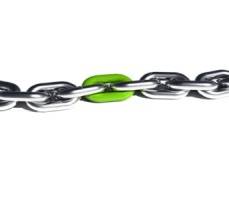March 6, 2013
Buying green products should involve a closer look at the supply chain
 Last year’s unrest in the Chinese factory that is a principal manufacturer of the iPhone5 shone a light into one of the usually dark corners of modern life. Namely that beneath the sleek facades of the products we buy lies the story of their production, transportation, marketing and eventual demise. Look further back than the factory and it usually starts with a hole in the ground; and, in the case of the iPhone, an open-cast rare earth mine in the Nevada desert which produces the raw materials for the cutting edge technologies that make our lives tick.
Last year’s unrest in the Chinese factory that is a principal manufacturer of the iPhone5 shone a light into one of the usually dark corners of modern life. Namely that beneath the sleek facades of the products we buy lies the story of their production, transportation, marketing and eventual demise. Look further back than the factory and it usually starts with a hole in the ground; and, in the case of the iPhone, an open-cast rare earth mine in the Nevada desert which produces the raw materials for the cutting edge technologies that make our lives tick.
No wonder a growing number of organisations want to delve beyond the headline environmental claims of suppliers to take a peek at what lies beneath. They are doing this not only to make more sophisticated claims about their own environmental performance but also to ensure the cost savings that go hand in glove with it. So while local authorities in England are already required to measure the carbon emissions associated with their operations greater attention is now being paid by many of them to the supply chain itself.
There are signs that greenhouse gas reporting will soon be compulsory. In June 2012 the UK Government announced that listed companies on the London Stock Exchange will need to report emissions from April of this year. Many organisations will follow that lead not least because of the clear links between such reporting, cost efficiencies and other benefits. This won’t be a box ticking exercise but a core part of the procurement function.
The ground rules for this are already in place, formed by specific programmes such as the CDP Supply Chain Initiative and European Supply Chain Institute yet there remains a degree of lag when it comes to answering the questions that buyers have about products. In a July 2012 survey carried out by Green Research nearly two thirds of the buyers surveyed said a lack of measurement standards hampers their efforts to track supply chain sustainability and four fifths of the companies surveyed were planning to ask suppliers for more information in the coming year. Around 64 per cent were confident that they had some degree of clout when it came to influencing the supply chain performance of their suppliers.
The gaps highlighted by such research can only be filled when everybody is pulling together to share information and establish best practice. This is crystallising into a very sophisticated approach which means not only buying the most sustainable products in terms of their most obvious characteristics: materials, processes and recyclability, but also buying them from suppliers who can demonstrate a sustainable approach across the processes and operations of their business.
The best suppliers tend to share important characteristics, not least a desire to deliver products and services that exceed industry norms and the requirements of legislation. Their environmental policies will also tend to look at the impact of every aspect of the firm’s operations on all stakeholders, including local communities and the organisation’s own suppliers. They will have a progressive approach to dealing with waste and recycling. They will also demonstrate a commitment to minimising the impact of the firm’s logistics on the environment.
There is increasing demand for standards and accreditations. Standard rating systems such as SKA are designed to inform occupiers landlords, developers, consultants, fit-out contractors and other members of the supply chain about the environmental performance of a building. SKA covers more than a hundred good practice measures covering waste, energy, emissions, materials, wellbeing, transport and so on. In turn it is exposing the supply chain to scrutiny and is directly encouraging suppliers to develop more sophisticated approaches to the issue.
The Government, too, is banging the drum for this approach. Throughout October the Department for Energy and Climate Change staged a number of breakfast briefings to promote the ideas behind its Green Deal and organisations such as DEFRA and the Carbon Trust continue to promote the business benefits for end users of understanding their supply chain.
Ultimately, it is the benefits perceived by the end user that will drive the development of greater understanding of the supply chain. Organisations may see they enjoy better risk-management especially if it depends on a particular raw material that is either scarce or which needs careful management. If they understand that, you are in a position to respond to the threats associated with unexpected turns of events such as scarcity or increasing costs.
Getting the systems in place takes time, effort and money, of course but the benefits will soon be there to see. The most important thing is to establish measurement and reporting as part of an everyday reporting routine. This involves understanding the things the organisation buys, the environmental impacts of the processes involved in acquiring them – including energy use, embedded carbon and waste management as well as understanding how this fits into the entire supply chain.













April 1, 2013 @ 7:55 am
Research is very necessary before buying any organic products as many companies just claim and are not certified to sell organic products.